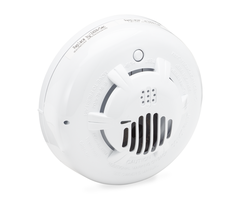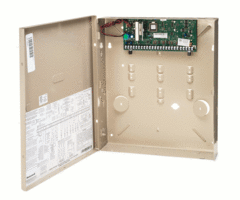LYNX Connect App Discontinued
Posted By Michael GorisWe have learned that the LYNX Connect App has been discontinued. The app can no longer be downloaded from the Apple App Store or the Google Play Store. Users wanting a second on-site option for controlling a LYNX Touch should use either a keypad or Total Connect 2.0, or upgrade to the Lyric.

The LYNX Connect App is a handy tool for many LYNX Touch users, It allows users to control a LYNX Touch System from a separate on-site device, all while enjoying the same user interface as the LYNX Touch System itself. The LYNX Touch Panel must have an L5100-WIFI Card installed and be on the same WIFI network as the device that is using the app to control the system. The app is designed for use with the L5100, L5200, L5210, and L7000 systems.
A very common application of the LYNX Connect App is to use it on a tablet that is mounted to the wall. By doing this, you can essentially have the tablet operate as a touchscreen keypad for the system. Many users find this to be a desirable option, as it is really the only way to obtain a secondary touchscreen controller for a LYNX Touch. By using a cheap tablet, you can readily establish a great secondary keypad for your system. Unfortunately, the discontinuation of the app means that this is no longer an option for many LYNX Touch users.
It turns out that all Firmware Versions 9 and higher for the LYNX Touch Systems does not work with the LYNX Connect App. In order to support the LTE communicators, a LYNX Touch System will need to be on some Firmware Revision that is higher than Firmware Version 9. The minimum Firmware Revision required depends on which LTE module you are using.
The LTE-L57A requires Firmware Revision 9.00.209 or higher, while the LTE-L57V requires Firmware Revision 9.00.201 or higher. Rather than update the app to make it compatible with the newer versions, Resideo made the decision to discontinue support. As a result, it is no longer possible to get the app for an Android or iOS device. Remember that the latest LYNX Touch Firmware Version is only available for the L5200, L5210 and L7000 Systems. If you have an L5100, then your system is running a lower Firmware Version, and it will still work with the app.
If you already have the LYNX Connect App downloaded, and your LYNX Touch System is running less than Firmware Version 9, then you can still continue to use the app. Many L5210 and L7000 users who use IP-only monitoring never upgraded to the latest Firmware Version. This is because the newer Firmware Versions only really benefit users with cellular connectivity. Just be aware that if you ever need to replace your Android or iOS device, you will not be able to re-download the app. And if you ever upgrade to Firmware Version 9 or higher on your panel, then the app will no longer work.
Remember that Firmware Version 9.00.201 or higher is needed to use the LTE-L57V, and Firmware Version 9.00209 or higher is needed to use an LTE-L57A. These updates are very important, as LTE is so crucial. If you want to replace a tablet that served as a secondary keypad using the LYNX Connect App, then you have a couple of options available. One possibility is to get a Honeywell 5828 or Honeywell 5828V Keypad. Both keypads will pair nicely with any LYNX Touch System.
You might also consider using Total Connect 2.0. This is an interactive monitoring platform that you can use to control your system from anywhere. TC2 is even more versatile and beneficial than the LYNX Connect App. This platform can be used to access the alarm system from virtually anywhere using the Total Connect 2.0 Mobile App. Since you can access it on a smartphone, many users find that it is even more convenient than setting up a second keypad.
Another option is to upgrade to the Resideo Lyric Alarm System. The Lyric has its own app called the MyHome Controller App that works in the same manner as the LYNX Connect App. The MyHome Controller app is still actively supported by Resideo, and it allows a tablet or smartphone to serve as a reliable secondary keypad. Other benefits for the Lyric include HomeKit compatibility, increased zone support, and its encrypted sensor options.
We apologize for any inconvenience that this may have caused. If you have any questions or concerns about the loss of the LYNX Connect App, or if you want to learn more about Total Connect 2.0, then we invite you to reach out to us. Our team is happy to help you determine the best replacement keypad option for your needs. The best way to contact us is by email at support@alarmgrid.com. You may also call us at (888) 818-7728 during our regular business hours of 9am to 8pm EST. We look forward to hearing from you!















